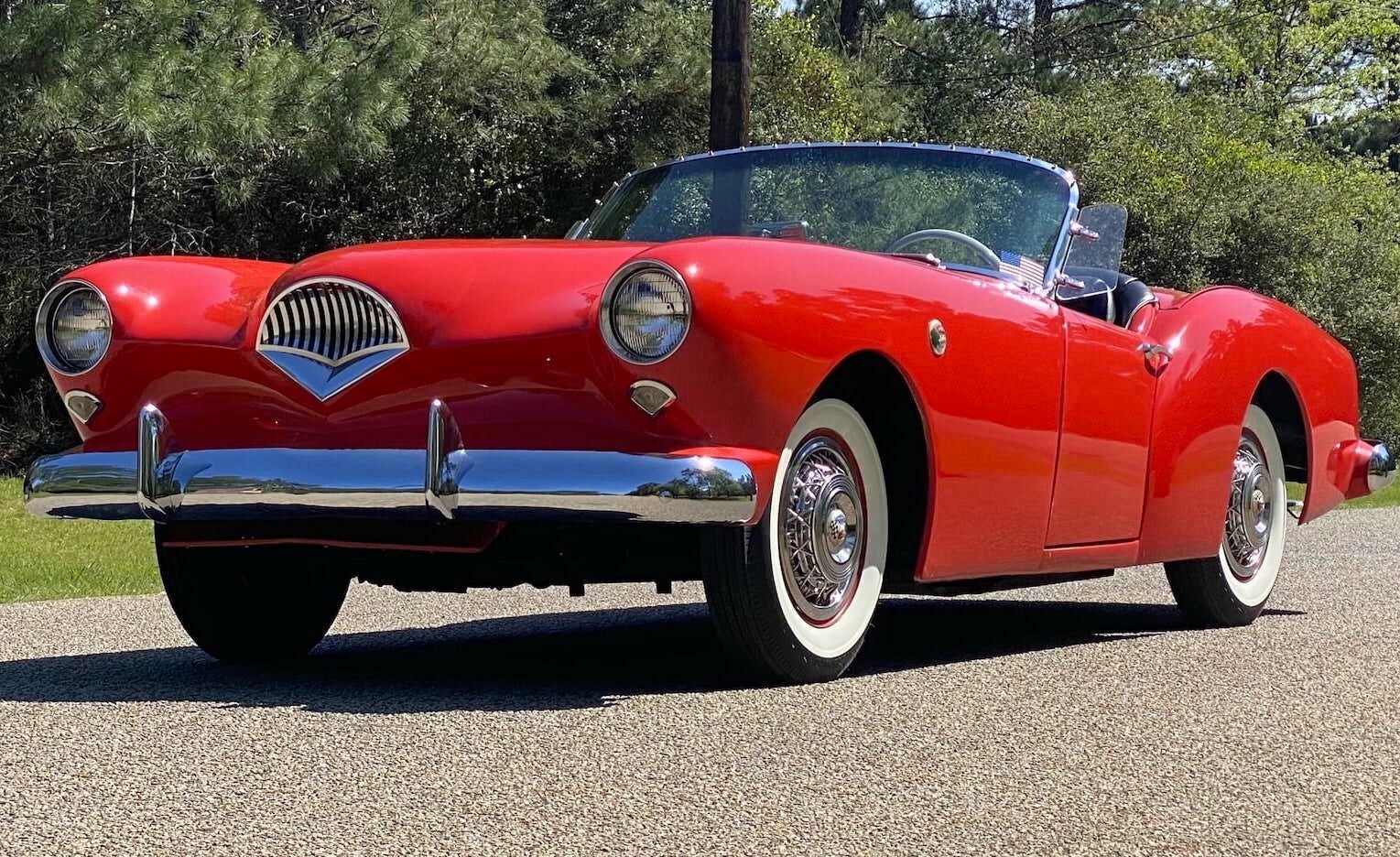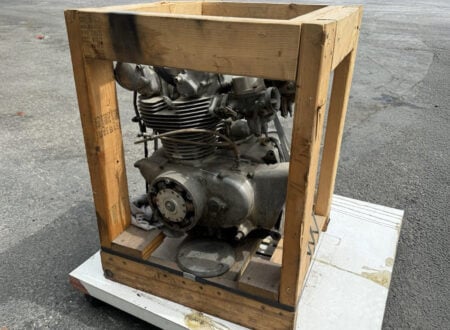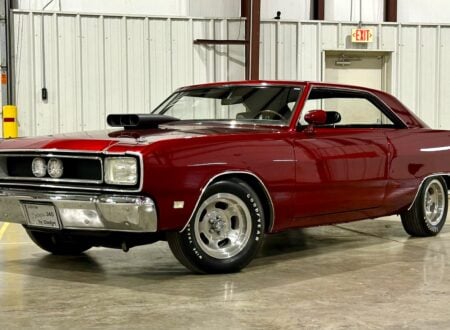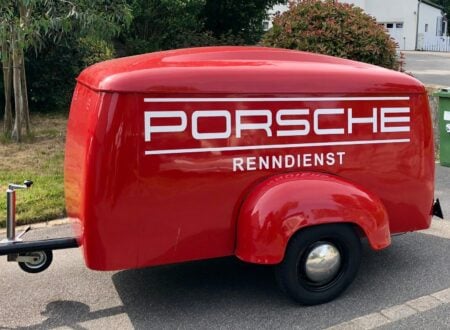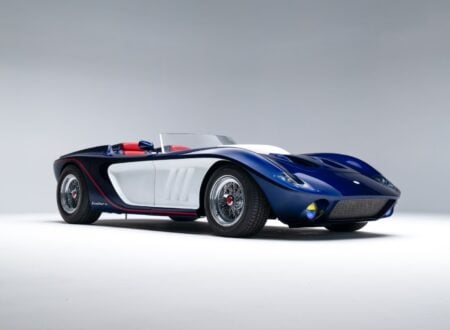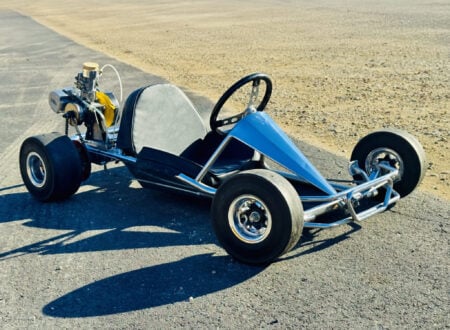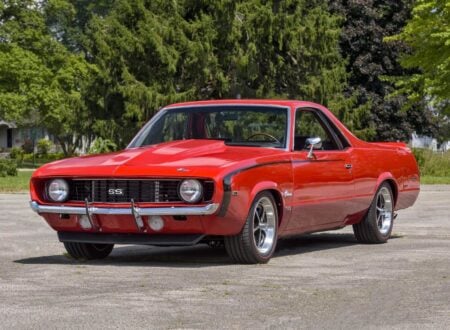The 1954 Kaiser Darrin you see here is number 281 of the 435 that were made, it was an innovative car with a lightweight fiberglass body, doors that slid forward into the front fenders, and elegant styling that was designed to compete with the popular European sports cars of the time.
The Kaiser Darrin was based on the Kaiser Henry J platform and powered by the Willys F-head inline-six with a displacement of 161 cubic inches (2.6 liters) and approximately 90 bhp. This means that although the Kaiser Darrin is rare, sourcing spare parts is often fairly simple.
Fast Facts – The Kaiser Darrin
- In 1952, the Kaiser-Frazer Corporation, established by Henry J. Kaiser and Joseph W. Frazer, tasked Darrin with creating a sports car to compete with the popular European sports cars on the market. The goal was to elevate the company’s profile in the sports car market segment.
- Darrin was a renowned American automotive designer Howard “Dutch” Darrin, who had previously worked with luxury car manufacturers like Rolls-Royce, Hispano-Suiza, and Packard. Darrin was known for his innovative design sensibilities and luxury car expertise.
- The Kaiser Darrin 161 featured a fiberglass body, just the second American production car to use the material. Additionally, it had innovative sliding doors that disappeared into the front fender, a three-position Landau convertible top, and a distinctive grille.
- The Kaiser Darrin was officially unveiled in 1953, but production delays and financial difficulties at the Kaiser-Frazer Corporation meant that the first models were not produced until 1954. The car was sold for just one year, with 435 made in total and far fewer surviving today.
Howard “Dutch” Darrin
Howard “Dutch” Darrin was a prominent American automobile designer who had made a name for himself through his work with European luxury car manufacturers like Rolls-Royce, Hispano-Suiza, and Packard.
Above Video: This episode of “Deep Dive” by The Petersen Automotive Museum covers the history of the Kaiser Darrin, and it offers an excellent look back at the history of the model.
Born in 1897, Darrin began his career as an aircraft designer before transitioning to automotive design in the 1920s working in Paris with with fellow American designer Thomas L. Hibbard, together the two men formed coachbuilding firm Hibbard & Darrin in 1923. Darrin’s innovative design sensibilities and a reputation for producing luxury vehicles quickly garnered him recognition in the industry.
Before the outbreak of WWII Darrin returned to the United States, establishing his own coachbuilding firm on Sunset Boulevard in Hollywood. He was soon working under contract with Packard on some of the most influential of the company’s designs of the 1930s and 1940s, including both the Packard 120 and Packard Clipper.
The Kaiser-Frazer Corporation
The Kaiser-Frazer Corporation was established in 1945 by American industrialist Henry J. Kaiser and automobile executive Joseph W. Frazer. The company aimed to compete with the Big Three of the American automotive industry: General Motors, Ford, and Chrysler.
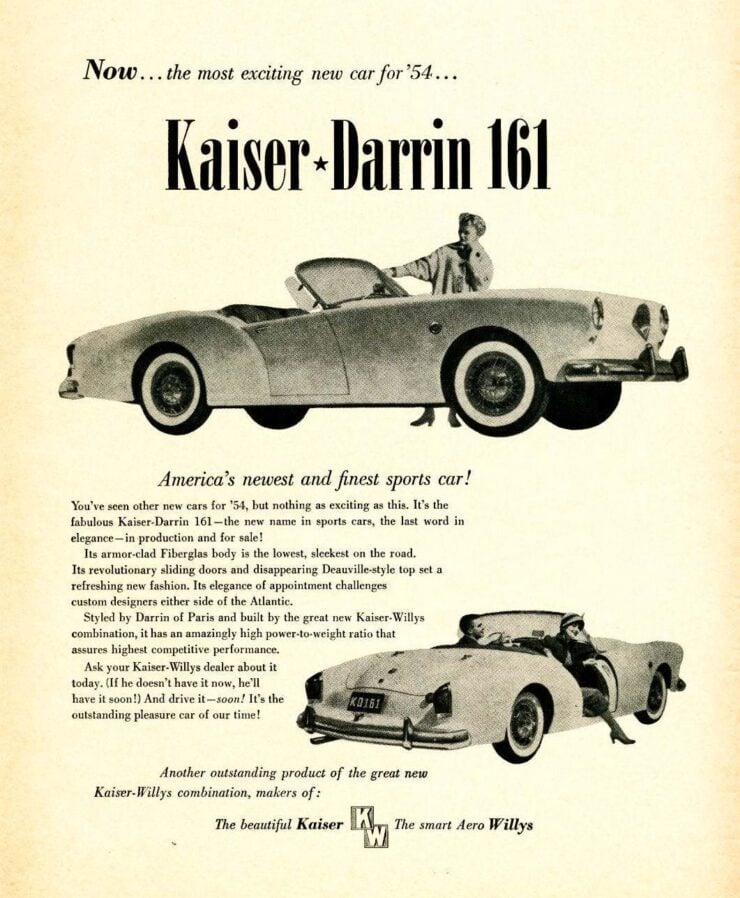

During WWII Kaiser had correctly predicted that there would be a huge boom in demand for affordable cars after the conflict. During the war the vast majority of civilian automotive manufacturing had been shut down and refocused on building vehicles and weapons for the war – so it was next to impossible to buy a new car until after 1945.
The team at Kaiser-Frazer worked on creating an affordable car that could be easily mass-produced, once the war ended it entered production and it enjoyed strong early sales, helped along by the fact that many of the major automakers went back to offering their pre-war designs.
While Kaiser-Frazer experienced some initial success, financial challenges soon began to mount. This environment set the stage for the introduction of the Kaiser Darrin, which was intended to elevate the company’s profile in the sports car market.
The Arrival of the Kaiser Darrin
In 1952, Darrin developed the car that would become known as the Kaiser Darrin in secret, without telling anyone at the Kaiser-Frazer Corporation. He believed that the Kaiser Henry J sedan deserved a much more attractive body than it had been given, and set out to prove it.
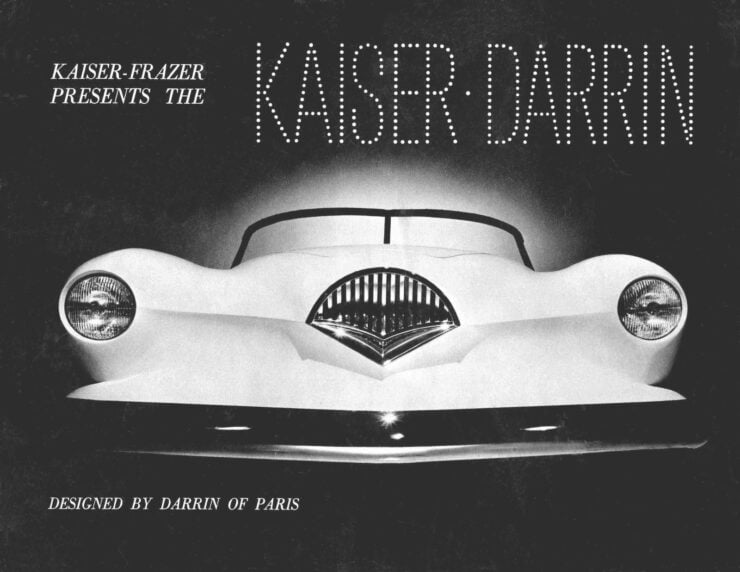

Once he had the prototype finished, built on a Kaiser Henry J platform but with a lightweight fiberglass body he showed it to Henry J. Kaiser, the head of Kaiser Motors, who absolutely hated it.
Fortunately, Kaiser’s wide was with him, she took him aside and sad something to the effect of:
“This is the most beautiful thing I have ever seen. I don’t see why you aren’t in the business of building sports cars. I don’t think there will be many automobile companies that won’t go into the sports car business after seeing this car.”
This changed Kaiser’s mind, and he greenlit the project for production in the hopes that it would give the company a vehicle that could compete with the European sports cars that were selling well in the United States, like the Jaguar XK120.
Darrin’s innovative design featured a lightweight fiberglass body, a first for an American car at the time (with the exception of some small companies like Devin), and a unique sliding door mechanism that allowed the doors to disappear into the front fender.
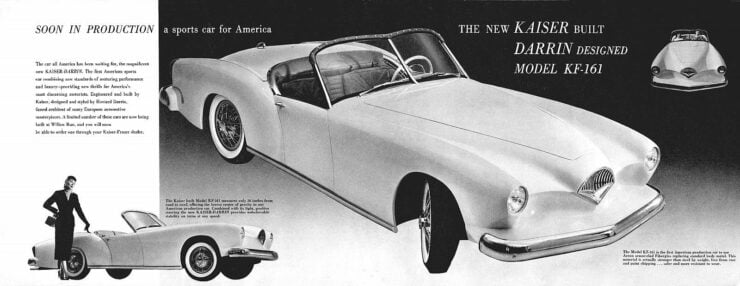

In 1953 the Chevrolet Corvette was first shown to the world, exactly two months after the Kaiser Darrin had been unveiled, in some respects it stole the thunder of the Kaiser Darrin, and it became the first mass-produced sports car with a fiberglass body in the USA.
The Kaiser Darrin had officially debuted in 1953, but production delays and financial challenges meant that the first models didn’t roll off the assembly line until 1954, a year after the Corvette. Despite its innovative design and early enthusiasm, the Kaiser Darrin faced stiff competition from cars like the Corvette and the sports cars from the more established European marques.
The Kaiser Darrin 161, named after its Willys F-head six-cylinder engine’s 161 cubic inch displacement, had a striking appearance with a low profile, long hood, and a sleek design that distinguished it from its contemporaries.
In addition to the innovative sliding doors, the Darrin boasted other novel features, such as a three-position Landau convertible top and a grille that was unlike anything else in production.
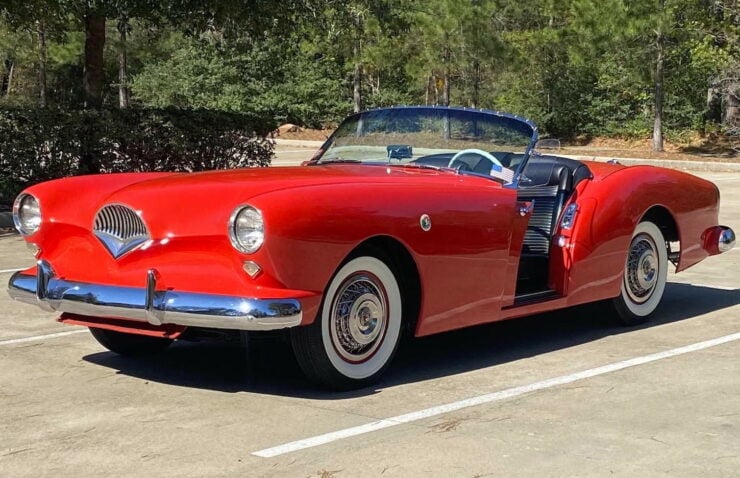

The Kaiser-Frazer Corporation was struggling financially as the 1950s progressed, and in 1954 the company merged with Willys-Overland to form Willys Motors, Inc. The newly-formed company chose to focus on the more profitable Jeep brand, spelling the end for the Kaiser Darrin. Ultimately, only 435 units were produced, making it one of the rarest American sports cars built during the Jet Age era.
Although the Kaiser Darrin had a short-lived production run, its legacy lives on as a unique piece of American automotive history. The Darrin’s fiberglass body, sliding doors, and elegant design left an indelible mark on the sports car market, with some elements later inspiring other automotive manufacturers.
The 1954 Kaiser Darrin Shown Here
The car you see here is the 281st example of the 435 that were made, it’s finished in red with wire wheels and period-correct white wall tires, with a black folding soft top, and a black interior.
As you would expect there’s a Willys F-head inline-six under the hood with a displacement of 161 cubic inches (2.6 liters) making approximately 90 bhp.
Power is sent back through a 3-speed manual transmission with overdrive and the car rides on independent front suspension with wishbones and coils, a live axle rear with semi-elliptical leaf springs, and drum brakes on all four corners.
The car is now due to roll across the action block with Mecum in mid-April in Houston, and you can visit the listing here if you’d like to read more about it or register to bid.
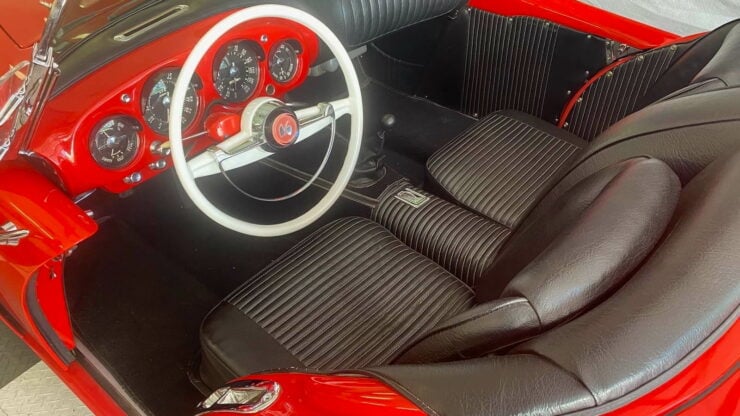
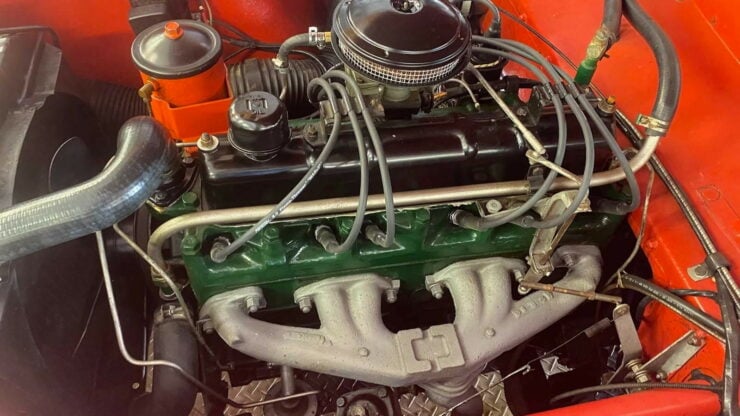
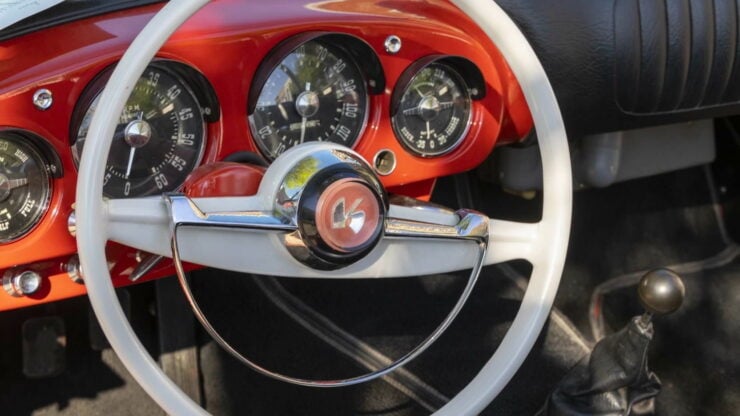
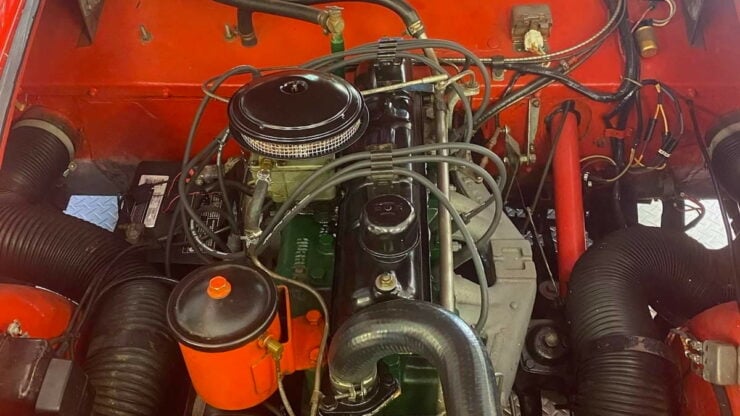
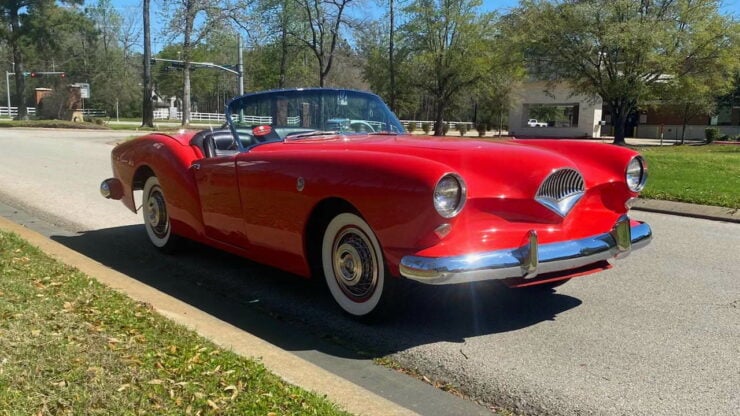
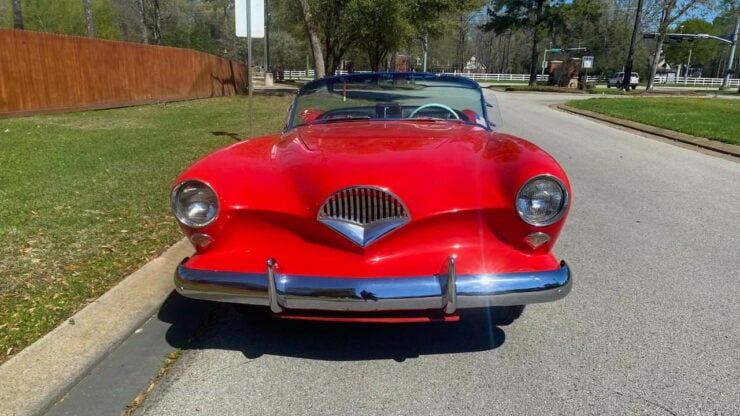
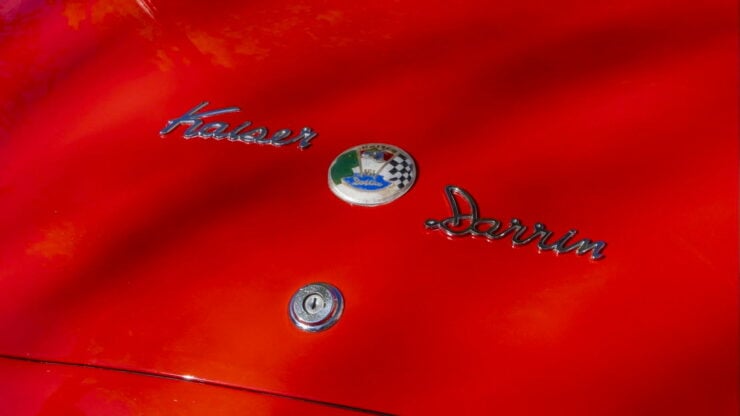
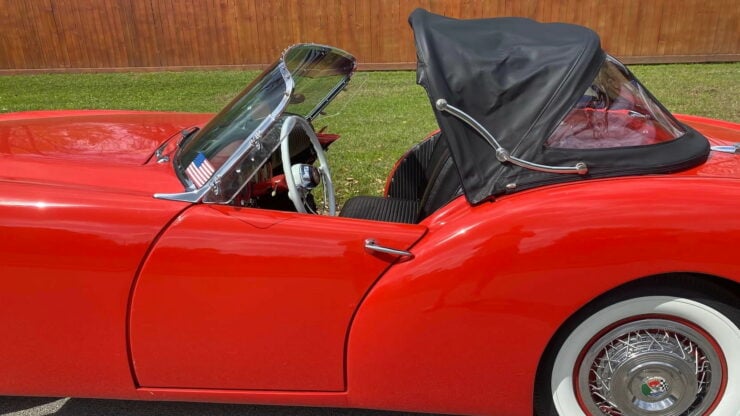
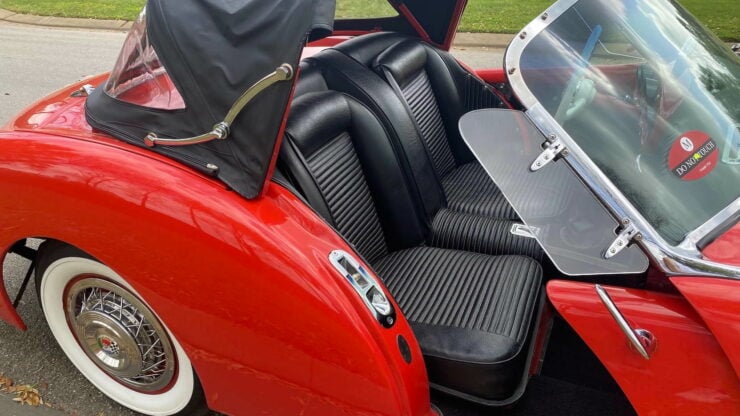
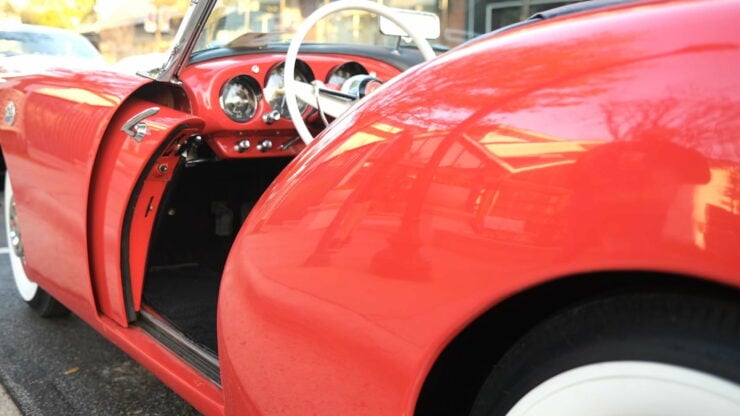
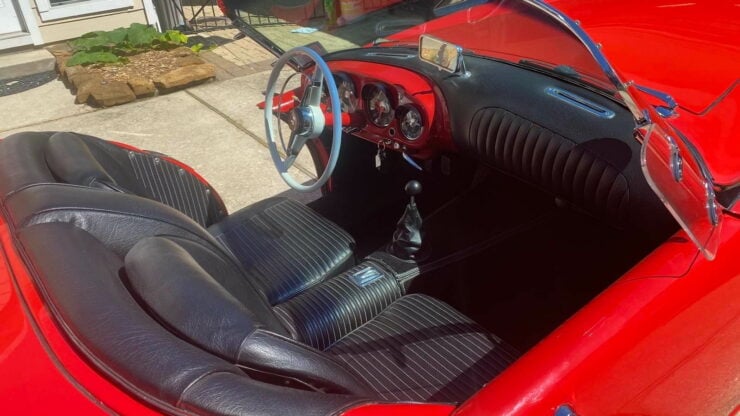
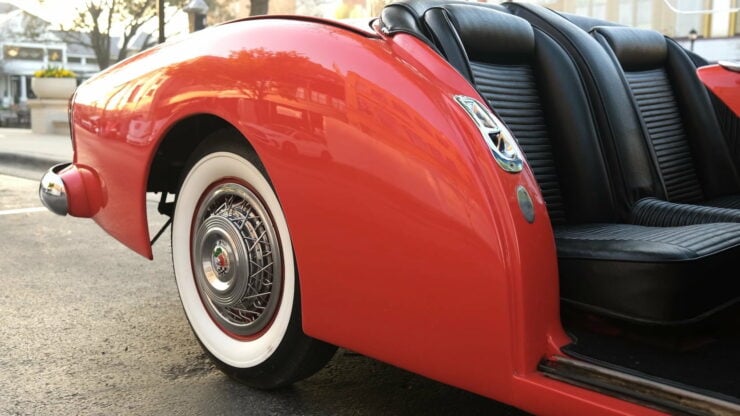
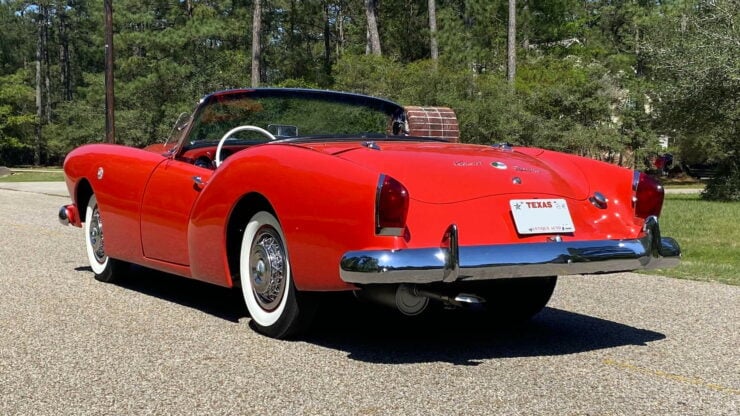
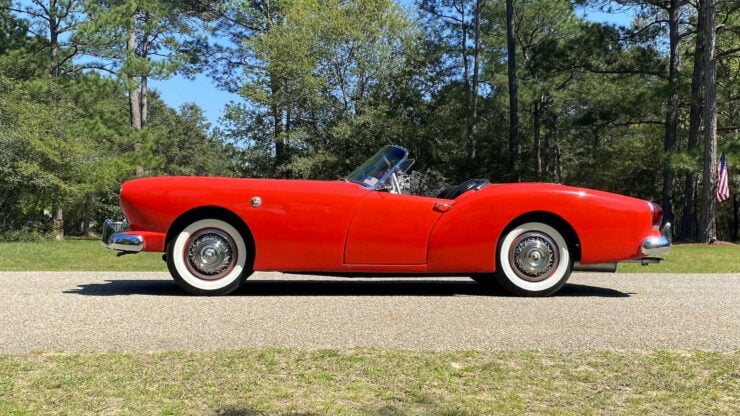
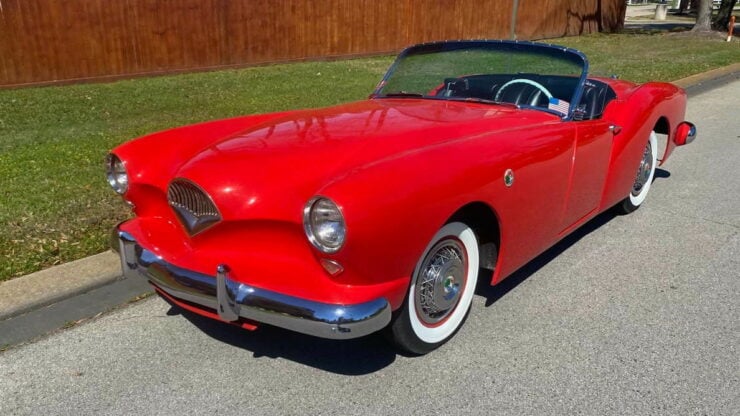

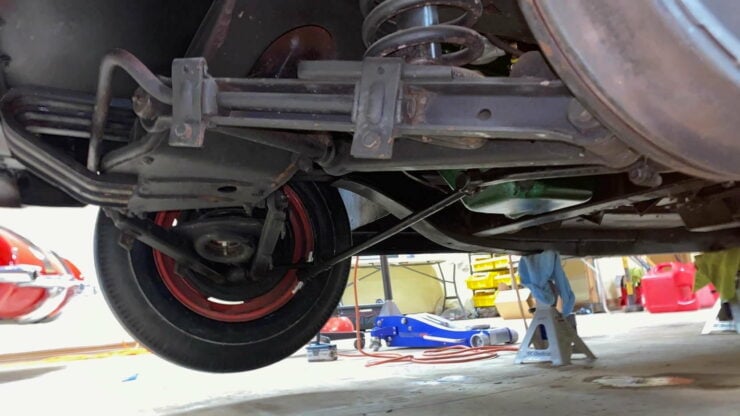
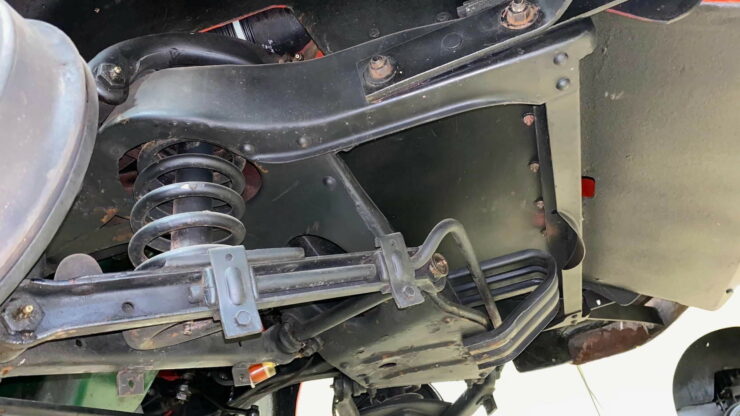
Images courtesy of Mecum

